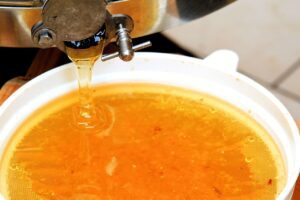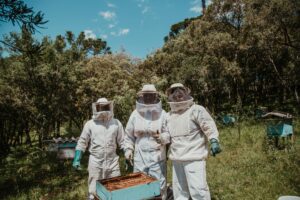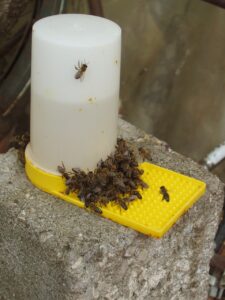Are you considering diving into the rewarding world of beekeeping? Choosing the right beekeeping kit is your first step towards a successful journey in this fascinating hobby. Whether you’re a complete novice or a curious enthusiast, understanding the essentials of beginner beekeeping and selecting the appropriate hive tools and protective gear is crucial. A well-equipped kit not only simplifies the process of setting up your hive but also ensures the safety and comfort needed during inspections and honey harvesting. This guide explores key hive components included in popular kits, offering insights to help you make an informed decision that aligns with your beekeeping goals.
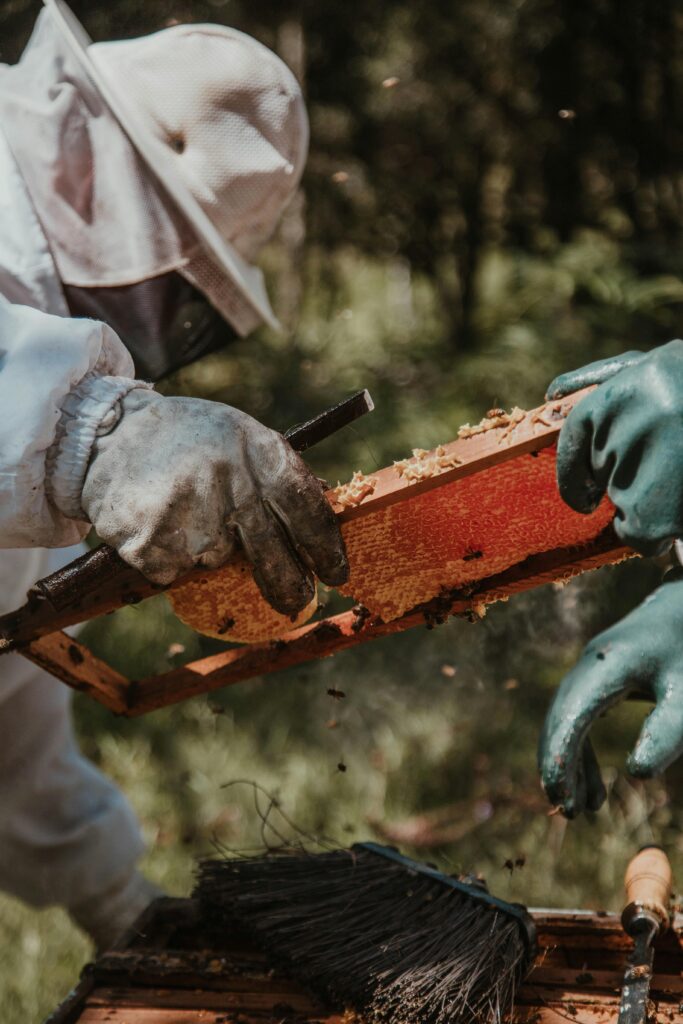
Table of Contents
1. Understanding Beekeeping Kits: Essentials for Beginners
What is a Kit and Why Do You Need One?
A kit typically includes essential tools and equipment necessary for starting and managing a beehive. It’s designed to provide beginners with everything they need to begin their beekeeping journey without having to source items individually. Having a kit ensures that you have the basic equipment required to handle bees safely and effectively, from hive management to honey extraction.
Benefits of Starting with a Beginner Beekeeping Kit
Starting with a beginner beekeeping kit offers several advantages. It simplifies the initial setup process by providing all necessary tools and protective gear in one package, saving time and effort. Additionally, these kits are often curated with beginners in mind, offering educational resources and guides to help newcomers learn the essentials of beekeeping practices. They also ensure that you start on the right foot with quality equipment designed for ease of use and safety.
Considerations Before Buying Your First Kit
Before purchasing your first kit, consider factors such as the size of the kit (suitable for the number of hives you plan to manage), the quality of materials used, and the reputation of the supplier or manufacturer. Assessing your specific needs and goals in beekeeping will help you choose a kit that aligns with your expectations and supports your long-term success in this hobby.
2. Key Components Found in Every Kit
Introduction to Hive Components
Every kit includes fundamental hive components such as hive bodies, frames, foundation sheets, and a hive cover. These components form the structural foundation of the hive where bees live, store honey, and rear brood. Understanding each component’s function and assembly is crucial for setting up and maintaining a healthy hive.
Essential Tools Included in Kits
Kits commonly include essential tools like a hive tool, smoker, and bee brush. These tools facilitate routine hive inspections, frame manipulation, and honey extraction processes. Having these tools readily available ensures beekeepers can perform necessary tasks efficiently and safely, minimizing disturbance to the colony.
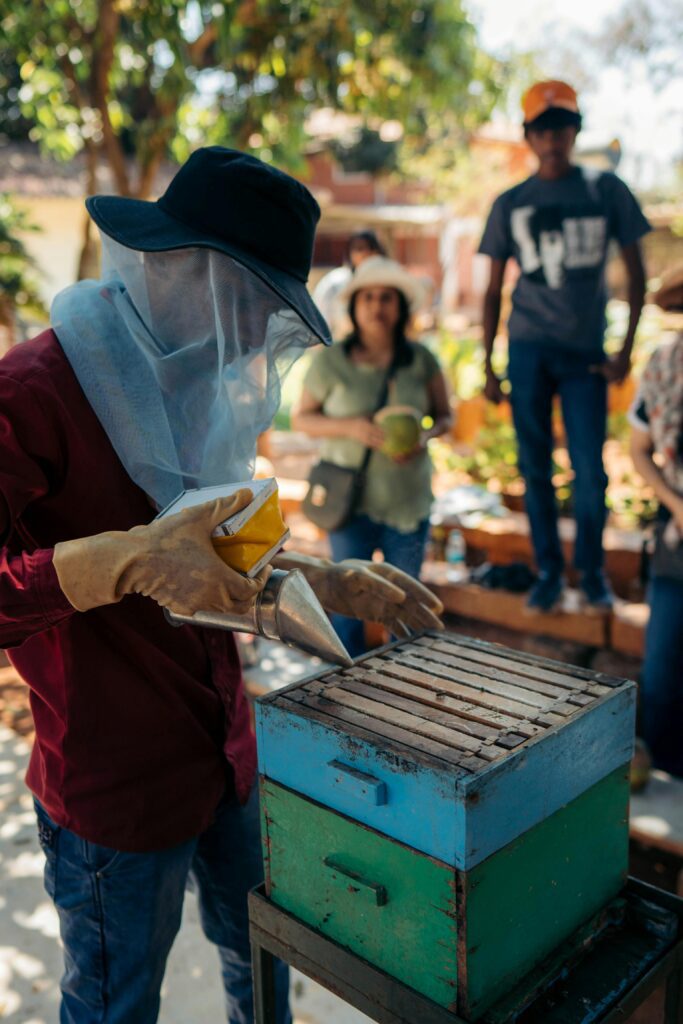
- Hive Tool: A hive tool is a versatile instrument used for prying apart hive components, scraping propolis and wax buildup, and separating frames during inspections. It helps beekeepers maintain hive structure without damaging frames or disturbing bees unnecessarily. Read Choosing the Right Hive Tools: 7 Tips for Beekeepers for more information.
- Smoker: A smoker is used to produce cool smoke that calms bees during hive inspections. By puffing smoke into the hive entrance and around the frames, beekeepers can reduce defensive behavior, making it safer to work with the bees. This tool is essential for minimizing stings and disruptions during inspections.
- Bee Brush: A bee brush has soft bristles and a gentle touch, allowing beekeepers to brush bees off frames and hive components without harming them. It helps clear bees from areas where they may be obstructing inspections or honey extraction processes.
- Uncapping Knife or Fork: Used during honey extraction, an uncapping knife or fork is designed to remove wax caps from honey-filled frames before extracting honey. This tool ensures efficient harvesting of honey without damaging the honeycomb or spilling honey.
- Queen Marking Tools: These tools include markers or cages used to safely mark queen bees for identification purposes. Marking queens with a specific color helps beekeepers locate and monitor them easily during hive inspections.
- Bee Feeder: Some kits include feeders designed to provide supplementary food to bees, especially during times of nectar scarcity or when establishing new hives. Feeders can come in various designs, including frame feeders and entrance feeders, depending on the kit.
- Honey Extractor: While not always included in basic kits, some advanced kits may include a honey extractor. This machine spins honey frames to extract honey without destroying the comb, allowing beekeepers to collect honey efficiently.
- Protective Gear: Though not strictly tools, protective gear such as a beekeeper’s suit, gloves, and veil are crucial components of kits. They provide essential protection against bee stings and minimize the risk of allergic reactions during hive inspections and honey harvesting.
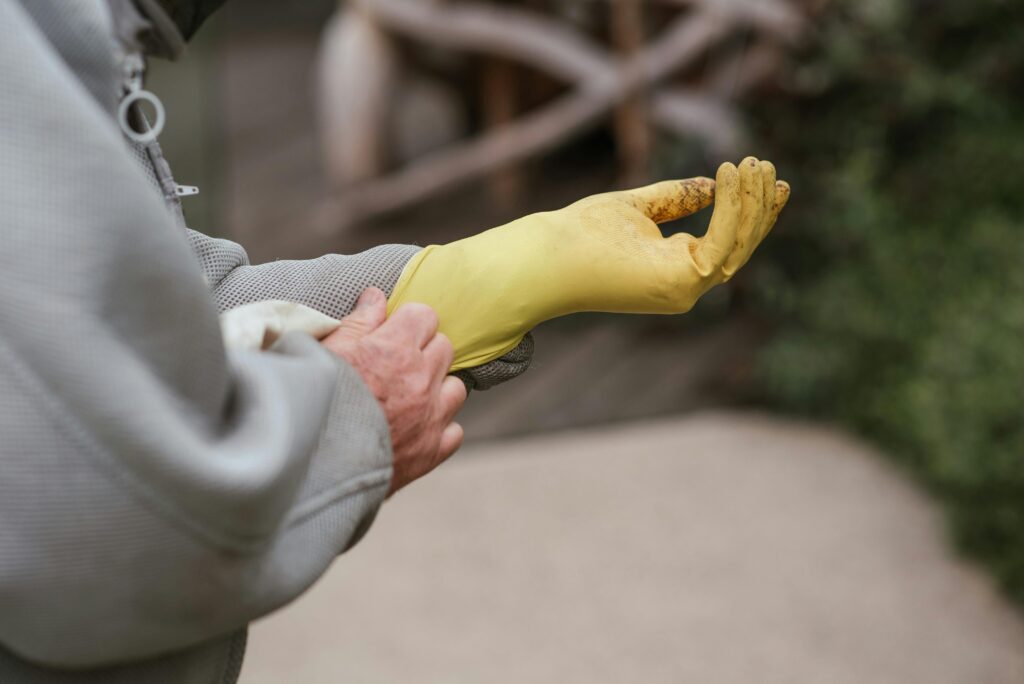
Optional Accessories to Enhance Your Beekeeping Experience
In addition to basic components and tools, many kits offer optional accessories such as feeders, queen excluders, and pollen traps. These accessories can enhance productivity, hive management, and bee health in various ways. Beekeepers may choose to incorporate these accessories based on their specific goals and the needs of their bee colonies.
- Feeders: Entrance Feeders, Top Feeders: Entrance feeders are placed at the hive entrance to provide easy access to supplementary food like sugar syrup or pollen substitute. Top feeders are installed above the frames inside the hive, allowing beekeepers to provide liquid feed without disturbing the bees during inspections.
- Queen Excluders: These devices are placed between the brood chamber and honey supers to restrict the queen bee’s access to honey storage areas, maintaining cleaner honey by preventing brood from being laid in honey supers. Read 10 Tips for Choosing the Right Queen Excluder for Your Hive for a more comprehensive guide.
- Pollen Traps: Installed at the hive entrance, pollen traps collect pollen pellets that bees carry back to the hive. Beekeepers can harvest collected pollen for various uses, including supplementing bee nutrition or selling as a bee product.
- Hive Beetle Traps: These traps are placed in the hive to control small hive beetle populations by attracting and trapping them. They help prevent beetle infestations that can damage honeycomb and disrupt hive health. 12 Tips for Managing and Preventing Hive Beetles in Your Apiary has more details for dealing with these pests.
- Queen Rearing Kits: Kits that include tools and instructions for beekeepers interested in raising their own queen bees. They typically include queen cups, grafting tools, and instructions on queen rearing techniques.
- Ventilation Aids: Tools such as screened bottom boards or hive top ventilators can help regulate hive temperature and humidity, especially in hot or humid climates. They improve airflow within the hive, promoting colony health.
- Hive Frames: 10 Proven Factors to Consider When Selecting
3. Choosing the Right Hive Tools for Your Needs
Overview of Essential Tools
Essential hive tools typically include a hive tool for prying apart hive components and scraping, a smoker to calm bees during inspections, and a bee brush for gently removing bees from frames. These tools are essential for routine hive maintenance, inspection, and honey harvesting.
Factors to Consider When Selecting Tools
When selecting hive tools, consider factors such as the materials used (stainless steel for durability), ergonomic design for comfort during use, and ease of cleaning and maintenance. Choosing tools that are appropriate for your level of experience and the size of your beekeeping operation will contribute to efficient hive management.
Recommended Tools for Beginners
For beginners, it’s advisable to start with a basic set of hive tools that includes a high-quality hive tool, smoker, and bee brush. These tools provide the essential functionality needed for routine hive inspections and management tasks. As beekeeping experience grows, additional specialized tools may be added to enhance efficiency and productivity.
4. Importance of Protective Gear in Kits
Why Protective Gear is Essential in Beekeeping
Protective gear, such as a beekeeper’s suit, gloves, and veil, is crucial for protecting beekeepers from bee stings and minimizing the risk of allergic reactions. It provides a physical barrier against bee aggression during hive inspections and honey harvesting, ensuring beekeepers can work comfortably and confidently around their bees.
Types of Protective Gear Included in Kits
Beekeeping kits typically include a full beekeeper’s suit or jacket with veil, gloves, and sometimes boots or footwear covers. The quality and design of protective gear can vary, so choosing gear made from durable, breathable materials that provide adequate coverage and ventilation is essential for safety and comfort.
Choosing the Right Protective Gear for Your Comfort and Safety
When choosing protective gear, consider factors such as fit (comfortable but not too loose), ventilation (to prevent overheating), and ease of movement (important during inspections). Investing in high-quality protective gear ensures long-term durability and effective protection against bee stings, promoting a positive beekeeping experience.
5. Comparing Hive Components Across Different Kits
The Beehive Chronicles: 6 Types of Hives for Bee Keeping and Advanced Apiculture Practices
Common Hive Components Found in Kits
Beekeeping kits commonly include standard hive components such as deep hive bodies, medium supers, frames with foundation, inner covers, and telescoping outer covers. These components vary in quality and design across different kits, impacting ease of assembly, durability, and hive performance.
Variations in Hive Components Between Different Kits
Variations in hive components can include material quality (wood vs. plastic), frame size compatibility, and the inclusion of specialized features like screened bottom boards or integrated feeding systems. Understanding these variations helps beekeepers choose kits that best align with their specific beekeeping goals and environmental conditions.
Tips for Evaluating Hive Components When Comparing Kits
When comparing beekeeping kits, consider factors such as the type of wood used (cedar vs. pine), frame assembly (pre-assembled vs. unassembled), and the presence of optional features like queen excluders or feeder systems. Evaluating these components ensures you select a kit that meets your needs for hive management and beekeeping practices.
6. Tips for Maintaining and Upgrading Your Kit
Basic Maintenance Tips for Beekeeping Equipment
Regular maintenance of beekeeping equipment, including cleaning hive tools, inspecting protective gear for wear and tear, and replacing worn-out components, ensures equipment longevity and effective hive management. Establishing a maintenance routine minimizes the risk of equipment failure during critical beekeeping tasks.
When and How to Upgrade Your Kit
As beekeeping skills and experience grow, consider upgrading to higher-quality hive components, advanced tools, or additional accessories that enhance hive productivity and bee health. Upgrades may include transitioning to durable hive bodies, improving honey extraction methods, or incorporating technology-driven hive monitoring systems.
Resources for Finding Quality Upgrades and Replacements
Finding quality upgrades and replacements for beekeeping equipment can be facilitated through reputable suppliers, local beekeeping associations, or online forums and reviews. Researching product reviews and seeking recommendations from experienced beekeepers can help identify reliable sources for upgrading your beekeeping kit.
Additional Resources
10 Essential Honey Bee Supplies Every Beekeeper Needs
Beginner’s Guide to Beekeeping: 8 Steps for Starting Your Journey
USDA PROGRAMS AND RESOURCES TO SUPPORT BEEKEEPERS
Conclusion
Selecting the right kit is pivotal for aspiring beekeepers looking to embark on their journey. These kits not only provide essential tools and components but also offer optional accessories that can significantly enhance productivity and hive management. Whether you’re starting out or looking to expand your beekeeping operation, understanding the functionality and benefits of each component and accessory ensures you can meet the needs of your bee colonies effectively. By investing in quality equipment and considering your specific goals, you’re well-positioned to enjoy a fulfilling and successful experience in beekeeping.

